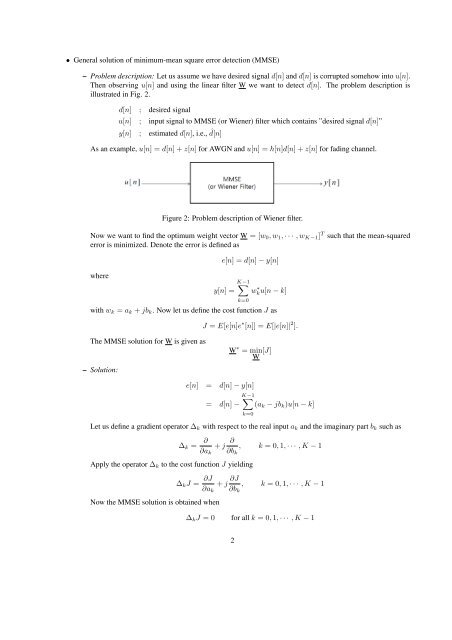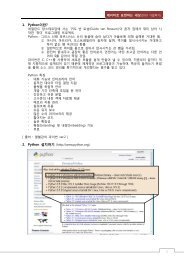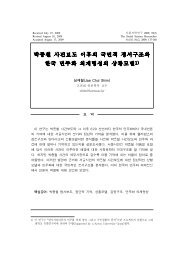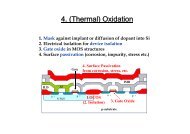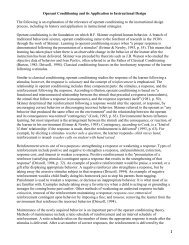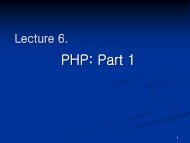MMSE Detection for Spatial Multiplexing MIMO (SM-MIMO)
MMSE Detection for Spatial Multiplexing MIMO (SM-MIMO)
MMSE Detection for Spatial Multiplexing MIMO (SM-MIMO)
Create successful ePaper yourself
Turn your PDF publications into a flip-book with our unique Google optimized e-Paper software.
• General solution of minimum-mean square error detection (<strong>MMSE</strong>)<br />
– Problem description: Let us assume we have desired signal d[n] and d[n] is corrupted somehow into u[n].<br />
Then observing u[n] and using the linear filter W we want to detect d[n]. The problem description is<br />
illustrated in Fig. 2.<br />
d[n] ; desired signal<br />
u[n] ; input signal to <strong>MMSE</strong> (or Wiener) filter which contains ”desired signal d[n]”<br />
y[n] ; estimated d[n], i.e., ˆd[n]<br />
As an example, u[n] = d[n] + z[n] <strong>for</strong> AWGN and u[n] = h[n]d[n] + z[n] <strong>for</strong> fading channel.<br />
Figure 2: Problem description of Wiener filter.<br />
Now we want to find the optimum weight vector W = [w 0 , w 1 , · · · , w K−1 ] T such that the mean-squared<br />
error is minimized. Denote the error is defined as<br />
where<br />
e[n] = d[n] − y[n]<br />
y[n] =<br />
K−1<br />
∑<br />
k=0<br />
w ∗ ku[n − k]<br />
with w k = a k + jb k . Now let us define the cost function J as<br />
J = E[e[n]e ∗ [n]] = E[|e[n]| 2 ].<br />
The <strong>MMSE</strong> solution <strong>for</strong> W is given as<br />
W ∗ = min<br />
W [J]<br />
– Solution:<br />
e[n] = d[n] − y[n]<br />
=<br />
K−1<br />
∑<br />
d[n] − (a k − jb k )u[n − k]<br />
k=0<br />
Let us define a gradient operator ∆ k with respect to the real input a k and the imaginary part b k such as<br />
∆ k =<br />
Apply the operator ∆ k to the cost function J yielding<br />
Now the <strong>MMSE</strong> solution is obtained when<br />
∂ + j ∂ , k = 0, 1, · · · , K − 1<br />
∂a k ∂b k<br />
∆ k J = ∂J<br />
∂a k<br />
+ j ∂J<br />
∂b k<br />
, k = 0, 1, · · · , K − 1<br />
∆ k J = 0 <strong>for</strong> all k = 0, 1, · · · , K − 1<br />
2


